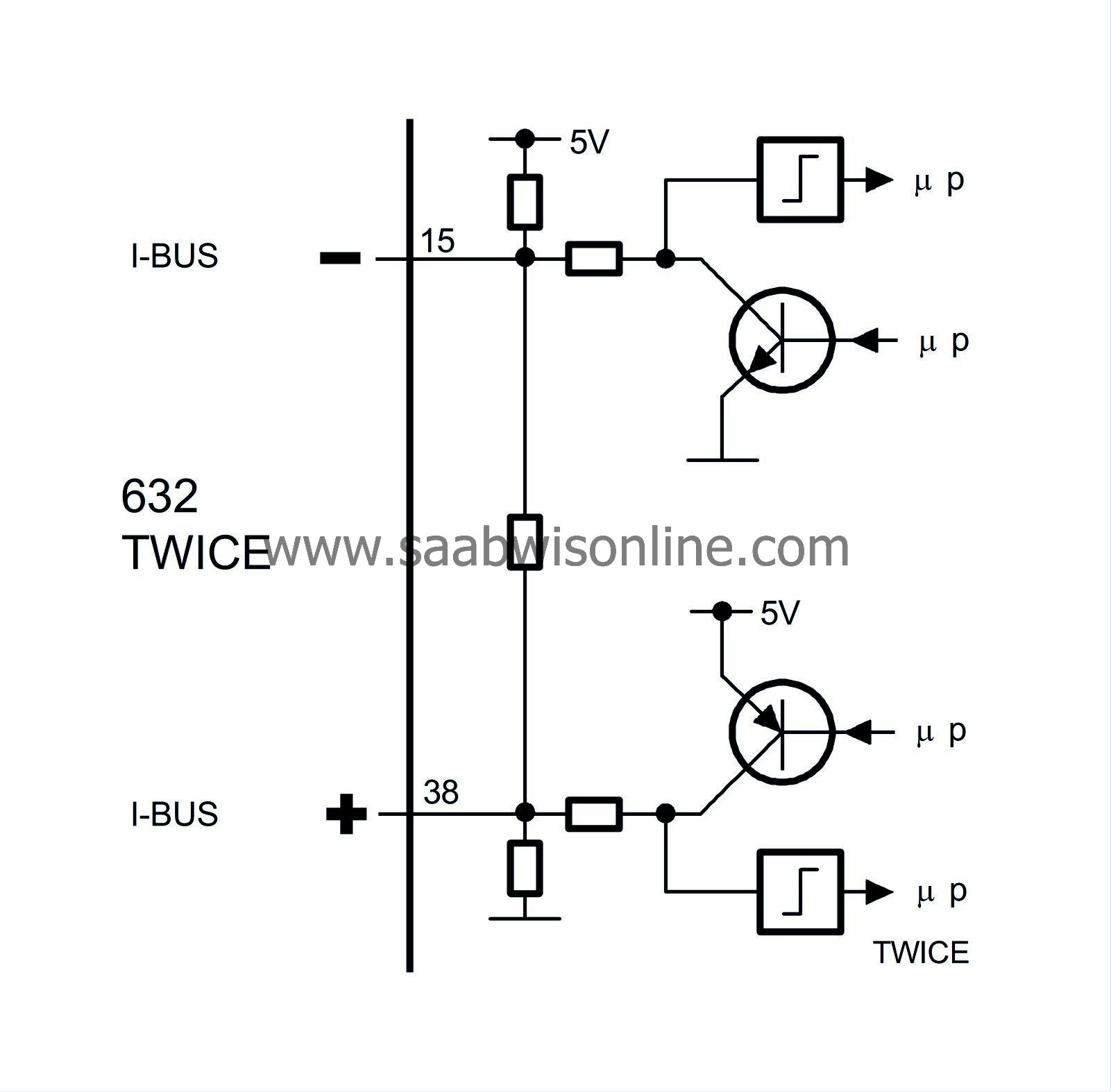Bus communication
| Bus communication |
| P-bus and I-bus |

In the Saab 9-5, all the car's control modules are connected to the buses with the exception of the ABS and SRS control modules.
The buses are divided into the Powertrain bus (P-bus) and the Instrument bus (I-bus). Both buses are connected to the main instrument unit (MIU). The buses are electrically isolated from each other.
The P-bus has a data transfer rate ten times higher than that of the I-bus.
All information sent out by a control module is available to all other control modules connected to the bus. The MIU ensures that the information which is available on one bus is also made available on the other.
The control module sends out information on the bus at regular intervals. The time between two transmissions depends on which information is being transmitted and varies between 10 milliseconds (0.010 secs.) and one second. Information is also sent out by the module whenever the information changes.
Information is transferred between the various control modules via two leads, BUS+ (green lead) and BUS- (white lead). On the p-bus the leads are twined together to reduce sensitivity to electrical interference.
| Diagnostics |
In a bus system, all units must be able to communicate with each other. For example, the engine cannot start unless the Trionic module can receive the immobilization information sent out by TWICE.
Permanent bus faults
All Tech 2 communication with systems connected to the bus takes place through DICE. Irrespective of which system is contacted, TECH 2 via DICE first checks that all on-board systems connected to the bus are turned on and communicating. If any module connected to the bus is missing, Tech 2 will show this. This means that all control modules connected to the bus can communicate correctly unless Tech 2 warns otherwise.Intermittent bus faults
The Trionic and TCM control modules always check that all modules from which they receive information are communicating properly. On an intermittent fault in the bus communication, DTCs will be given in the Trionic and TCM modules. The cause of the fault may be that the control module concerned has lost power or one of the bus leads has been disconnected.Incorrect values on the bus
A Diagnostic Trouble Code (DTC) is given in the Trionic and TCM modules if any information they obtain from the bus has an incorrect value. The DTC text indicates the system where the fault has occurred.For further information about the buses, see Bus and Diagnostic Communication
 .
.
| TWICE uses the following information |
| TWICE sends out the following information |




